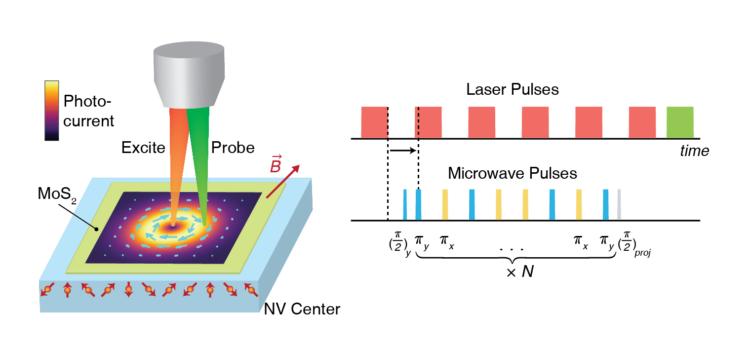
B. B. Zhou, P. C. Jerger, K. H. Lee, M. Fukami, F. Mujid, J. Park & D. D. Awschalom. Spatiotemporal mapping of a photocurrent vortex in monolayer MoS2 using diamond quantum sensors. Phys. Rev. X 10, 011003 (2020).
Photocurrents are conventionally detected by counting the charge that flows between two contacts, but electrical detection cannot resolve the path that the photocurrent travels within a material. With collaborators at University of Chicago, we demonstrate a novel technique to resolve how photocurrents flow within a material by detecting their local magnetic field. Our demonstration utilizes quantum magnetometers to visualize the distribution of photocurrent flow within a semiconductor that is only three atoms thick.
We transfer a monolayer MoS2 sheet onto a diamond chip containing a near-surface ensemble of NV centers. By synchronizing pulsed photo-excitation with microwave driving of the NV center spin, we detect the local magnetic fields produced by photocurrents with high sensitivity (as small as 20 nA per micron). Surprisingly, we find conditions when the photocurrent circulates as a vortex around the excitation spot! Our ac technique additionally allows us to characterize the dynamics of photocurrent generation.
Spatially and temporally resolved measurements of photocurrent distributions are important for understanding how local variations, such as defects and grain boundaries, affect the flow of current in photosensitive components used in cameras, solar cells, and medical imaging. Our technique is applicable for characterizing the local optoelectronic properties of diverse systems, including thin-film semiconductors and topological materials.
